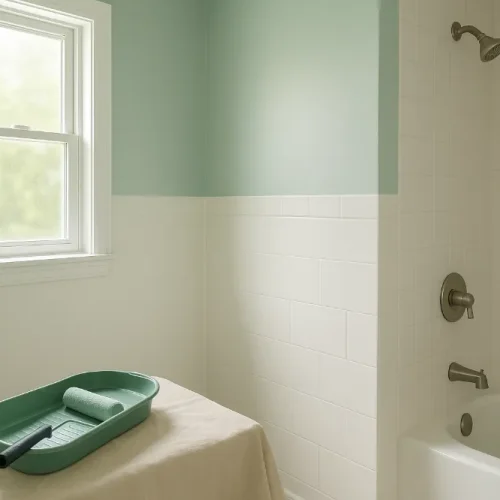
Let’s get one thing straight: pests don’t care if you have a brand new build or a charming century home. They don’t check your cleaning schedule or your home’s Zillow estimate. If they see an opportunity, they’ll take it.
The unfortunate truth is that every home is a potential target for creatures looking for food, water, and shelter. But you’re not as powerless as you think.
The secret to maintaining a pest-free home is smart, consistent prevention. In this guide, we’ll show you how to keep common pests out for good with a room-by-room and season-by-season playbook for a secure and comfortable home.
Why Pest Prevention Matters
Thinking about pests might make your skin crawl, but ignoring them can lead to some serious headaches. Pests can cause significant damage to your property, contaminate your food, and even pose health risks to your family and pets. Termites, for instance, can silently chew through your home’s structure, while rodents can gnaw on electrical wires, creating a fire hazard.
Then there’s the financial side. The cost of dealing with a full-blown infestation is almost always higher than the small, consistent efforts of prevention.
Think of it as home maintenance, just like cleaning your gutters or checking your smoke detectors. A little work now saves you a lot of money and stress later. Plus, a well-maintained, pest-free home protects your investment and gives you invaluable peace of mind.
Know Your Enemy: Common Household Pests
Different pests are drawn to different things, but they all want the same basics: food, water, and a safe place to hide.
- Ants: These tiny insects are usually after crumbs and water. You’ll see them trailing along baseboards and countertops, especially in the spring and summer.
- Cockroaches: Drawn to moisture, grease, and food scraps, roaches love dark, damp places like under sinks and behind appliances. They are notoriously resilient.
- Rodents (Mice/Rats): As the weather cools, rodents look for warmth indoors. They can squeeze through shockingly small cracks and will chew on almost anything, from food packaging to insulation.
- Spiders: While most house spiders are harmless, they’re a sign that other insects are present, as spiders go where their food source is. You’ll find their webs in quiet, undisturbed corners.
- Pantry Pests: Little beetles and moths can hitch a ride into your home in flour, cereal, or grain packages. They live and breed right in your food supply.
- Termites: These are the silent destroyers. Termites feed on wood and can cause extensive structural damage before you even know they’re there. Look for mud tubes on your foundation or discarded wings.
Room-by-Room Prevention Tips
By making your home less attractive to pests, you can stop them before they ever move in.
Kitchen & Pantry
This is ground zero for many pest invasions.
- Transfer dry goods like flour, sugar, pasta, and cereal into airtight glass or plastic containers. Cardboard boxes are an open invitation.
- Wipe down counters and sweep or vacuum floors daily to eliminate crumbs and spills.
- Don’t leave produce sitting out on the counter. Store it in the refrigerator or in covered bowls.
- Take your trash out every night, especially if it contains food scraps. Make sure your indoor and outdoor trash cans have tight-fitting lids.
Bathroom & Laundry Room
Pests love moisture, making these rooms prime real estate for everything from flies to silverfish.
- Fix leaky faucets and pipes immediately. Even a slow drip provides enough water for pests to survive.
- Use your bathroom’s exhaust fan during and after showers to reduce humidity. A small dehumidifier can also work wonders in a damp laundry room or bathroom.
- Check that your dryer vent is properly sealed and clear of lint.
Living Areas & Bedrooms
Clutter provides the perfect hiding spot for pests, including the most nightmare-inducing ones like bed bugs.
- Reduce clutter, especially in closets and storage areas. Piles of clothes or boxes create a haven for spiders and other insects.
- Vacuum and dust regularly, making sure to get behind and under furniture where dust and pet hair accumulate.
- Inspect and seal any gaps along baseboards, window frames, and around electrical outlets.
Basement, Attic, & Garage
These often-overlooked spaces are common entry points for rodents, ants, spiders, and more.
- Store belongings in sealed plastic bins instead of cardboard boxes, which attract rodents and roaches.
- Thoroughly inspect the exterior walls for gaps and cracks, sealing any you find with caulk or steel wool for larger openings.
- Make sure these areas stay dry and well-ventilated to prevent moisture buildup that attracts a variety of pests.
Exterior Maintenance for Pest Control
Your home’s first line of defense is its exterior, so pay just as much attention to the outside of your home as you do the inside:
- Trim shrubs, trees, and other vegetation so they don’t touch your house. Branches can act as a bridge for pests to get inside.
- Clean your gutters regularly. Clogged gutters trap water and decaying leaves, creating a perfect breeding ground for mosquitoes and other insects.
- Store firewood at least 20 feet away from your house and off the ground.
- Inspect and repair any torn window screens or worn-out weather stripping around doors and windows.
- Walk around your foundation and seal any cracks you find. Pay close attention to where utility pipes enter the home, as these are common pest highways.
Seasonal Pest Prevention Checklist
Pest pressures change with the seasons. Here’s a quick checklist to stay on top of things year-round.
- Spring: As the world wakes up, so do pests. Check for moisture buildup from spring rains, clear away yard debris, and watch for early ant trails.
- Summer: Pest activity is at its peak. Look out for fruit flies in the kitchen, check for wasp nests under eaves, and be extra diligent about cleaning up food and drink spills.
- Fall: Rodents start looking for a warm place to spend the winter. This is the most important time to seal up any gaps in your home’s exterior.
- Winter: Pests that are already inside will be looking for warmth. Inspect your attic and basement for signs of spiders and rodent activity, like droppings or nests.
When DIY Isn’t Enough
You can do everything right and still face a persistent pest problem. Sometimes, an infestation is too established for DIY methods to handle. If you see recurring signs of pests despite your best efforts, it’s time to call in a professional.
Warning signs of a deeper problem include finding droppings, noticing strange smells, or seeing the same pests over and over.
A professional pest control company can identify the source of the problem and use treatments that are more effective and targeted than what’s available to consumers. They can save you time, frustration, and ultimately protect your home from further damage.
Your Pest-Free Home Starts Now
Pest control is a marathon, not a sprint. It’s an ongoing habit that becomes part of your regular home maintenance routine. Adopt these preventive measures and you’ll be one step closer to getting rid of bugs and rodents while also working hard to create a healthier, safer, and more secure environment for you and your family…one you’ll undoubtedly be proud of for years to come.
Don’t feel overwhelmed. Just start somewhere. This week, pick one or two rooms in your house and give them a thorough inspection using the tips above.
A little effort today will pay off in a big way down the line, giving you a home that’s comfortable, clean, and happily pest-free.
FAQs
Most pests look for food, water, and shelter. Crumbs, leaks, clutter, and gaps in the exterior all invite them in.
A quick monthly check and a deeper inspection each season can help catch early signs.
Kitchens, bathrooms, basements, attics, and laundry rooms tend to attract the most pests due to moisture and food sources.
Store food in airtight containers, wipe surfaces daily, remove trash frequently, and fix plumbing leaks.
Even spotless homes can have cracks, open vents, leaky pipes, or outdoor access points pests can exploit.
Droppings, strange odors, gnaw marks, grease trails, discarded wings, and frequent sightings of the same pest.
DIY works for minor issues, but larger or recurring infestations usually require professional treatment.
Fix leaks, use exhaust fans, clean gutters, and consider a dehumidifier in damp areas.
If you notice ongoing pest activity, structural damage, or signs of nests despite DIY prevention.
Seal exterior gaps, maintain cleanliness, store food properly, manage yard debris, and follow seasonal prevention checklists.













